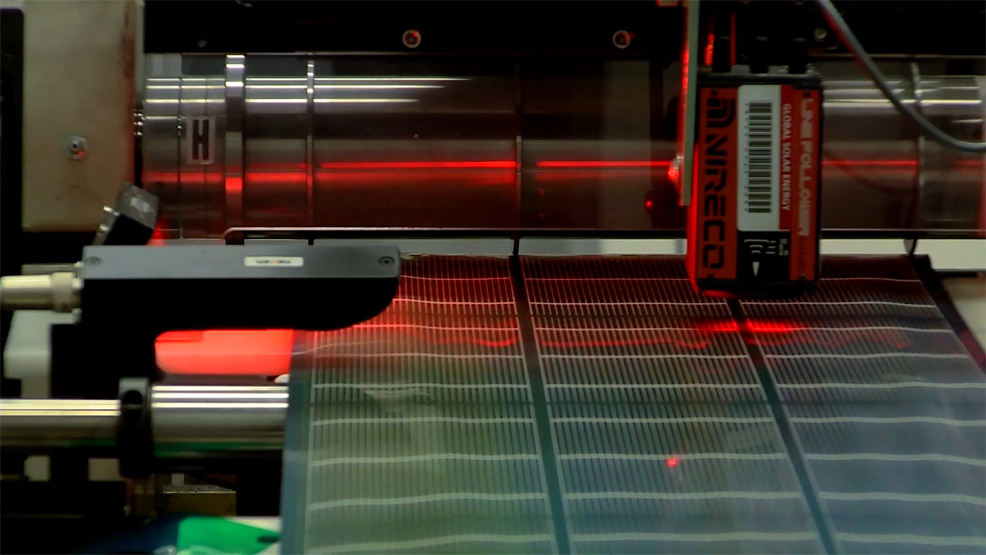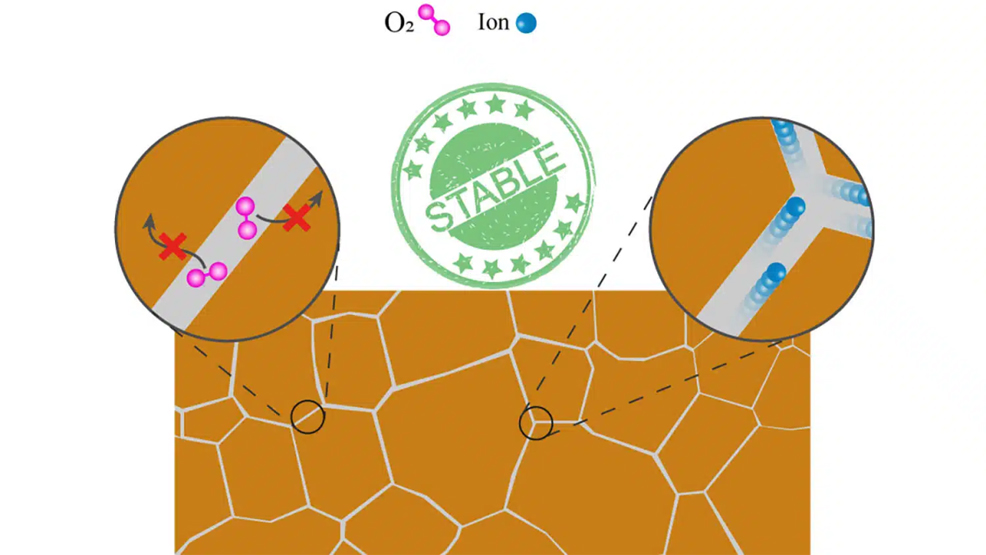
6th March 2023 Channelling of ions can boost solar cell efficiency The channelling of ions into defined pathways in perovskite materials is shown to improve the stability and operational performance of perovskite solar cells. A research team at North Carolina State University claims this could boost their efficiency from 25% to 40%.
Perovskite-based solar cells have gained attention in recent years, due to their potential to revolutionise the field of photovoltaics. They can be fabricated using low-cost materials and simple processes that are cheaper than traditional silicon and other cell types. Production can also be done quickly, which is attractive for large-scale manufacturing. Placed on lightweight and flexible substrates, they offer a wider range of applications and are easier to install. Yet another advantage is their versatility and the ease with which they can be tuned to absorb different wavelengths of light. However, perovskite solar cells are still in the early stages of development, and there are several challenges that need to be addressed – such as stability and durability issues, before they can be widely adopted. Perovskite is defined by its crystalline structure, which is better at absorbing light than silicon is. Perovskite materials are "ionic", and the application of a voltage causes ions to migrate through them. These migrating ions are believed to contribute to chemical and structural changes, which ultimately make the materials inefficient and unstable. To make practical perovskite solar cells, researchers need to find a way to address this problem. Researchers from North Carolina State University (NCSU) recently announced a significant breakthrough. Writing in Nature, they describe how the channelling of ions into defined pathways in perovskite materials improves the stability and operational performance of perovskite-based solar. This finding paves the way for a new generation of lighter, more flexible, and more efficient solar cell technologies suitable for practical use.
"We have not found a way to prevent ions from moving through perovskite materials," explains Aram Amassian, Professor of Materials Science and Engineering at the NCSU. "But we've found that it is possible to steer these ions into a safe conduit that does not impair the material's structural integrity or performance. It's a big step forward." The safe conduit, in this case, is something called a grain boundary. Perovskite materials are multi-crystalline. That means they form as a series of crystals or "grains" that are flush with each other. These grains absorb light and generate the charges needed for an electrical current. Each of those grains has the same crystalline structure, but the grains may be oriented in slightly different directions. The area where the grains touch is called a grain boundary. "What we've found is that grains are better protected from impairment when the ions move predominantly along the grain boundary," explains Masoud Ghasemi, former postdoctoral researcher at NCSU who is now at Penn State. "Coupling this with what is already known about perovskite materials, it's clear that problems start when grain boundaries are weak, which makes it easier for ions to move into the grains themselves. Designing stronger grain boundaries that protect the grains is essential to block migrating ions and other harmful species like oxygen from entering the grains, mitigating problematic chemical and structural changes in the material." "This is an important insight, because there are established techniques we can use to engineer perovskite materials and their grain boundaries; we can now make use of these approaches to protect the grains," explains Amassian. "We demonstrate how those techniques strengthen grain boundaries in this paper. In short – we now know what needs to be done to make far more stable perovskites." This technique may also help in developing more efficient energy storage technologies. "This work advances our fundamental understanding of how ions move through any crystalline material that can carry charge, not just halide perovskites," Amassian says. "We're excited to talk to colleagues who work on energy storage about how this may inform the engineering of faster ion conductors." The world record efficiency for a single-junction perovskite solar cell recently passed the 25% milestone. The team at NCSU believes their breakthrough has the potential to create efficiencies of 40% or higher, which could make perovskite one of the most promising of all solar cell types.
Comments »
If you enjoyed this article, please consider sharing it:
|








